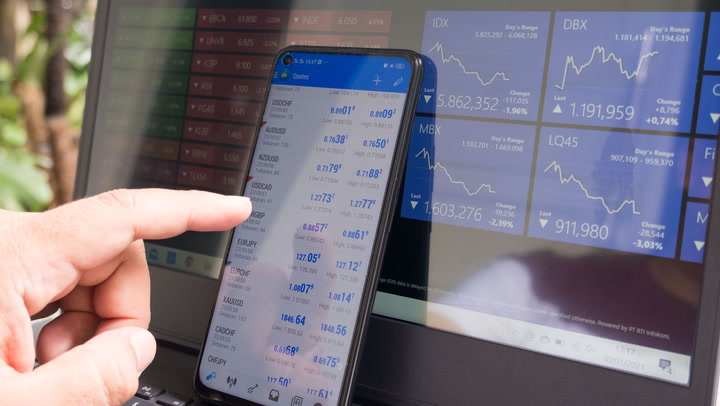-
Lack
of
staking
is
unlikely
to
concern
institutional
investors,
though
retail
investors
may
be
upset,
Synder
said. -
This
difference
in
demand
means
there
is
a
potential
business
case
for
providers
to
list
separate,
distinct
products
to
satisfy
both
camps.
Institutional
investors
are
unlikely
to
be
concerned
that
U.S.
spot
ether
(ETH)
exchange-traded
funds
(ETFs)
won’t
be
staking
the
underlying
token
to
provide
extra
returns,
according
to
Ophelia
Snyder,
a
co-founder
of
digital
asset
manager
21Shares,
even
though
retail
investors
would
be
keen
to
have
that
built-in.
The
discrepancy
means
there
is
a
potential
business
case
for
providers
to
list
separate,
distinct
products
to
satisfy
both
camps,
Snyder
told
CoinDesk
in
an
interview.
Spot
ether
ETFs
look
set
to
list
in
the
U.S.
in
the
near
future
after
the
Securities
and
Exchange
Commission
(SEC)
approved
key
regulatory
filings
from
applicants
last
month.
SEC
Chair
Gary
Gensler
told
senators
in
a
budget
hearing
last
week
that
final
approvals
should
be
finished
in
coming
months.
Prospective
providers
have
removed
the
provisions
for
staking
from
their
applications
to
avoid
potential
regulatory
roadblocks.
“One
of
the
things
that
people
forget
is
that
staked
assets
have
an
impact
on
liquidity,”
she
said.
“So,
if
ether’s
unstaking
period
balloons
to
22
days,
which
does
happen,
how
do
you
deal
with
that?”
Institutional
appetite
There
have
been
suggestions
that
the
lack
of
staking
may
damp
investor
appetite
for
ether
ETFs.
JPMorgan
said
at
the
end
of
May
that
it
expects
$3
billion
worth
of
inflows
by
the
end
of
2024.
That
figure
could
double
if
staking
were
permitted.
Snyder,
however,
doesn’t
think
the
absence
of
staking
is
an
issue
for
institutional
investors.
If
it
were,
they’d
want
to
see
a
track
record
of
asset
managers
executing
effectively
against
withdrawal
delays
because
of
the
intrinsic
risk
management
that
it
requires,
she
said.
“For
example,
there
could
be
months
when
the
unstaking
period
is
six
or
nine
days,
and
that
range
can
be
so
wide,
it
changes
your
liquidity
requirements,”
Snyder
said.
“And
it
doesn’t
just
jump
from
nine
to
22
days.
It
actually
slowly
extends
and
if
you
monitor
these
things,
there
are
data
inputs
that
you
can
use
to
manage
that
portfolio
such
that
you’re
doing
the
right
things
in
terms
of
maximizing
returns
while
minimizing
the
probability
of
a
liquidity
issue.”
21Shares
is
likely
to
have
a
handle
on
the
institutional
market.
Not
only
is
it
one
of
the
existing
providers
of
a
spot
bitcoin
ETF
in
the
U.S.,
it’s
one
of
the
largest
exchange-traded
product
(ETP)
issuers
in
Europe.
Its
ether
ETP,
which
includes
staking,
has
assets
under
management
of
around
$532
million.
Its
SOL
equivalent
has
$821
million.
The
company
is
also
applying
for
a
U.S.
spot
ether
ETF.
That
specifically
excludes
staking
as
a
source
of
income.
There’s
another
issue
to
consider
too:
government
coffers.
It
is
unclear
how
staking
rewards
will
be
treated
from
a
tax
point
of
view
in
the
U.S.,
she
said.
“If
you
want
institutions
to
come
and
play,
you
need
to
start
by
making
it
easy,”
she
said.
Non-staked
products
would
be
“more
digestible”
to
an
institutional
audience
even
if
they’re
less
popular
with
retail
investors.



